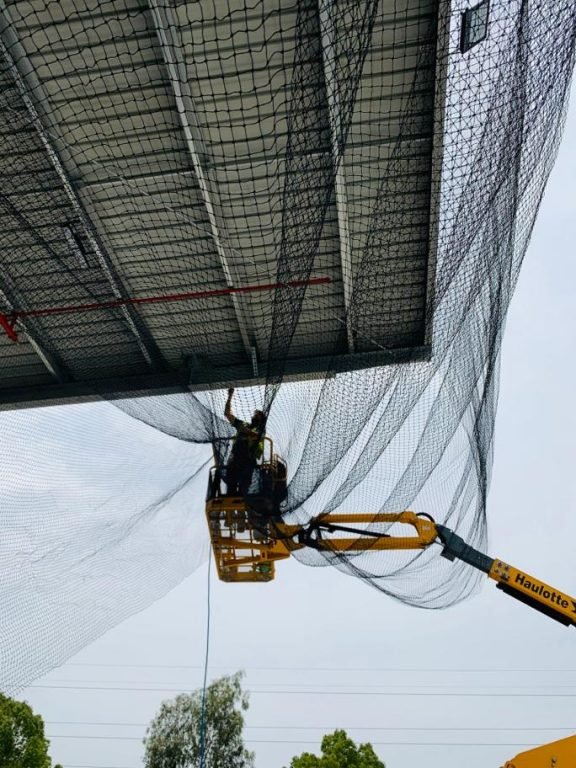Having an overgrown tree on your property can be beautiful, but it can also be…
A Beginner’s Guide to Bird Removal: Tips and Techniques
Birds are fascinating creatures, but when they invade our homes or outdoor spaces in large numbers, they can become a nuisance. Removing birds from unwanted areas requires careful consideration and humane methods to ensure their safety. In this beginner’s guide, we will explore effective techniques and tips for bird removal that will help you address this issue while respecting the well-being of these beautiful creatures.
Understanding the Need for Bird Removal
Before taking any steps for bird control in Sydney, it’s crucial to understand why they have chosen it as their habitat. Birds often seek shelter, food, or nesting sites in places that offer protection from predators and adverse weather conditions. Common problem areas include attics, chimneys, balconies, and gardens with abundant food sources. Identifying the reasons birds are attracted to a specific location will help you develop an effective removal plan.
· Prevention is Key
The best way to handle a bird problem is to prevent it from occurring in the first place. Seal any gaps or openings in your home’s exterior that may serve as entry points for birds. Install bird netting or spikes to prevent them from nesting in unwanted areas. Regularly clean up food sources, such as spilled birdseed or uncovered trash cans, to discourage birds from frequenting your property. By implementing these preventive measures, you can avoid future bird-related issues.
· Non-lethal Deterrents
Using non-lethal deterrents is an effective and humane way to facilitate bird control in Sydney. There are several options available, such as visual deterrents, audio repellents, and physical barriers. Visual deterrents include reflective surfaces, shiny objects, or predator decoys like plastic owls or snakes. Audio repellents can be devices that emit distress calls or predator sounds. Physical barriers like netting or wire mesh can block access to specific areas while still allowing ventilation. It’s important to note that deterrents should be rotated or periodically changed to prevent birds from becoming accustomed to them.
· Attract and Redirect
If birds are causing damage to certain areas of your property, consider creating alternative spaces that are more suitable for them. Install bird feeders, birdbaths, or nesting boxes in a location away from your home to attract birds. This will help redirect their attention and activities to a more appropriate area while preserving the aesthetic appeal of your property. By providing an attractive alternative, you can encourage birds to settle in a space where they are welcome.
· Seek Professional Assistance
In some cases, bird removal may require professional help. If you are dealing with a large infestation or if the birds are protected species, it is best to contact a local wildlife or pest control service. These professionals have the expertise and experience to safely handle bird removal while ensuring compliance with local regulations. They can assess the situation, provide guidance, and employ appropriate techniques to address the issue effectively.
Non-lethal Techniques of removing birds
When it comes to bird removal, it’s important to prioritize humane and safe techniques that don’t cause harm to the birds. Here are some recommended methods for safely removing birds:
- Identify the species: Different bird species may require different approaches for removal. It’s important to identify the type of bird you’re dealing with to tailor your methods accordingly.
- Exclusion and deterrents: The first step in bird removal is to prevent them from entering or roosting in unwanted areas. Seal off any access points, such as gaps or openings, using bird netting, wire mesh, or other suitable materials.
- Noise and visual distractions: Birds can be frightened away by loud noises or visual distractions. Use devices such as ultrasonic sound emitters, noisemakers, or visual repellents like moving objects or shiny materials. However, be mindful of the noise level to avoid causing distress to nearby residents or other animals.
- Professional assistance: If the bird infestation is severe or persists despite your efforts, it may be best to seek help from professional wildlife removal experts or pest control services. They have the necessary expertise and equipment to handle bird removal safely and effectively.
- Nest and egg removal: If you’re dealing with nesting birds, it’s important to address the nests and eggs appropriately. In some cases, you may need permits or permissions to remove nests due to legal protections for certain bird species. Contact local wildlife authorities or bird conservation organizations for guidance on proper nest removal procedures.
Remember, it is generally recommended to avoid trapping and relocation as it can cause harm or stress to the birds. Always prioritize humane methods that allow the birds to leave on their own or deter them from returning to unwanted areas. Dealing with a bird problem can be challenging, but with the right approach, it is possible to resolve the issue in a humane and effective manner.
By implementing preventive measures, using non-lethal deterrents, redirecting birds, and seeking professional assistance when necessary, you can successfully remove birds from unwanted areas while promoting coexistence with nature. Remember to always prioritize the well-being of these creatures, respecting their presence in our ecosystem.







